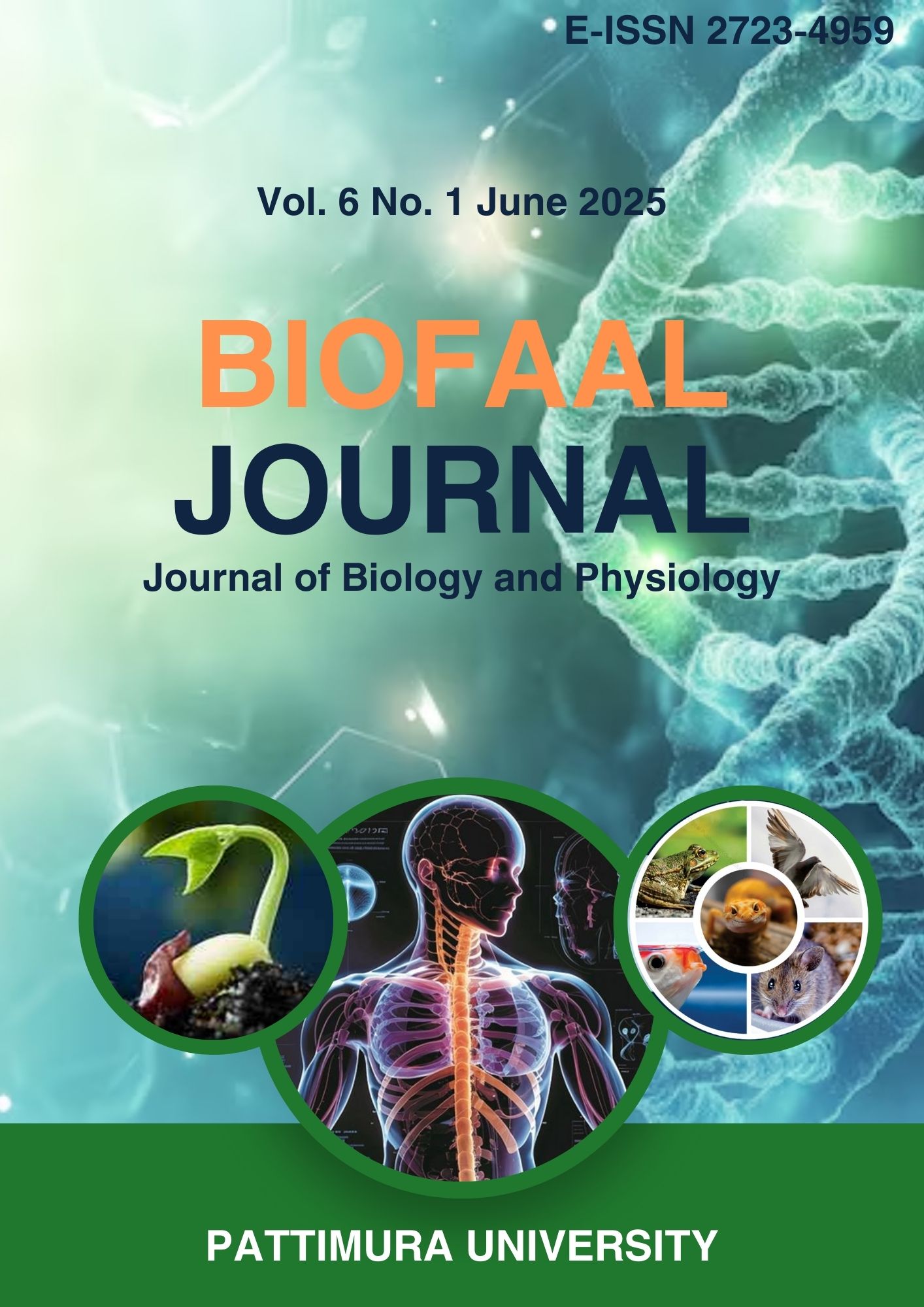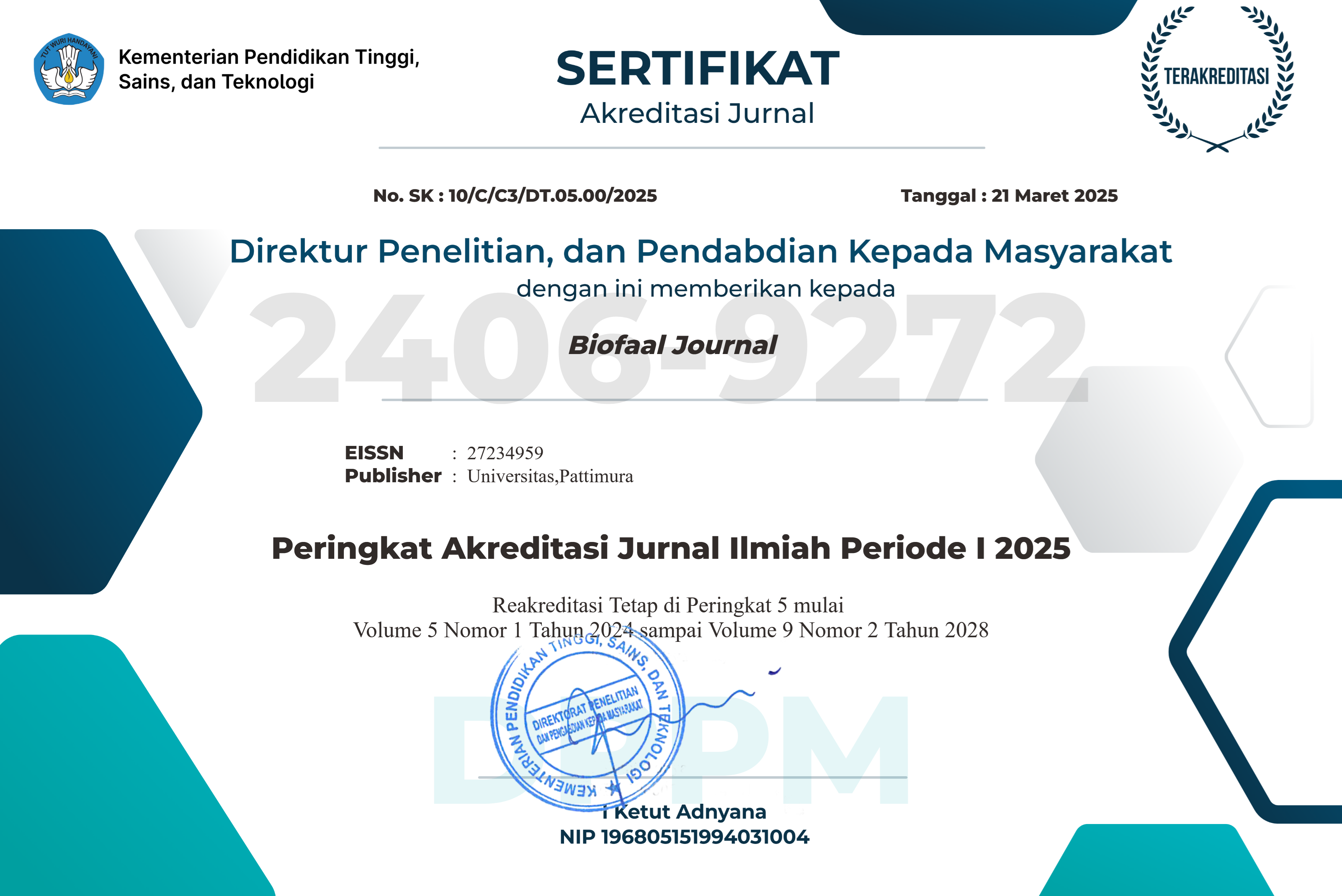Efficacy Test of Ethanol Extract From Matoa (Pometia pinnata) Stem Bark on Aedes aegypti Larval Mortality As An Effort to Control Dengue Fever
Abstract
Dengue Hemorrhagic Fever (DHF) is an infectious disease caused by the dengue virus and transmitted primarily through the bite of the Aedes aegypti mosquito, the disease's primary vector. Controlling the population of this mosquito species is considered a strategic measure in preventing the spread of DHF. One potential biological control agent is the matoa plant (Pometia pinnata), a member of the Sapindaceae family widely distributed in tropical regions. This plant contains secondary metabolites such as flavonoids, tannins, and saponins, which exhibit natural insecticidal activity. This study aims to evaluate the efficacy of ethanol extract derived from the bark of P. pinnata against A. aegypti larvae. The extraction process was conducted using ethanol as a solvent, and the resulting extract was tested against mosquito larvae at concentrations of 25 ppm, 50 ppm, 70 ppm, and 90 ppm. Larval mortality data were analysed using Analysis of Variance (ANOVA) via SPSS software version 24.00. The results demonstrated that the ethanol extract of P. pinnata bark had a significant dose-dependent effect on larval mortality. These findings suggest the potential of the extract as a natural active ingredient in the formulation of plant-based larvicides, contributing to environmentally friendly and sustainable dengue vector control strategies.
Downloads
Copyright (c) 2025 Debby D Moniharapon, Mechiavel Moniharapon

This work is licensed under a Creative Commons Attribution-NonCommercial-ShareAlike 4.0 International License.
1. Author retain copyright and grant the journal right of first publication with the work simultaneously licensed under a creative commons attribution license that allow others to share the work within an acknowledgement of the work’s authorship and initial publication of this journal.
2. Authors are able to enter into separate, additional contractual arrangementfor the non-exclusive distribution of the journal’s published version of the work (e.g. acknowledgement of its initial publication in this journal).
3. Authors are permitted and encouraged to post their work online(e.g. in institutional repositories or on their websites) prior to and during the submission process, as it can lead to productive exchanges, as well as earlier and greater citation of published works.








